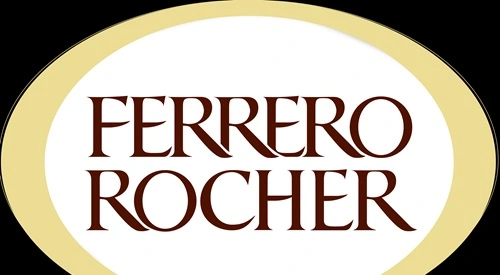Ferrero Rocher, owned by Ferrero SpA, is a renowned name in the premium chocolate market. Founded in 1982, the company’s luxurious hazelnut-filled chocolates are recognized worldwide for their distinctive gold packaging and high-quality ingredients. Over the years, Ferrero Rocher has expanded its product line and penetrated markets across the globe. As of 2024, the brand remains a leader in the chocolate industry, offering a premium product that symbolizes indulgence and gifting. However, the company also faces challenges in an increasingly health-conscious world and a competitive market landscape.

Ferrero Rocher Current Overview:
In 2024, Ferrero Rocher operates in more than 40 countries and produces over 3 billion chocolates annually. The brand has a strong foothold in Europe, North America, and parts of Asia, where it is often associated with special occasions and holidays like Christmas and Valentine’s Day. The company is known for its other products, including Nutella, Kinder, and Tic Tac, which further bolster its presence in the global confectionery market. Despite its market dominance, Ferrero Rocher faces competition from luxury chocolate brands like Lindt, Godiva, and Ghirardelli, as well as a growing demand for healthier alternatives.
Strengths:
1. Strong Brand Recognition: Ferrero Rocher is one of the most recognized names in the premium chocolate segment. Its consistent quality, attractive packaging, and association with special occasions have earned it a loyal customer base globally.
2. Global Reach and Production Capacity: Ferrero Rocher operates in over 40 countries and produces millions of chocolates daily, giving it a large global footprint and operational strength.
3. Premium Positioning: The brand is known for its luxurious and high-quality image, making it a preferred choice for gifting. This premium positioning has helped it stand out in a competitive market.
4. Product Innovation and R&D: Ferrero Rocher invests in research and development, ensuring continuous improvement in quality and innovation. Its introduction of new products like dark chocolate and smaller packages caters to evolving customer demands.
Weaknesses:
1. Seasonal Dependency: Ferrero Rocher experiences a spike in sales during holidays like Christmas and Valentine’s Day, creating a dependency on seasonal demand. This reliance on festive periods makes it vulnerable to fluctuations outside peak times.
2. High Competition: In the premium chocolate market, Ferrero Rocher faces intense competition from other luxury brands like Lindt and Godiva. This competition limits its ability to further increase market share in mature markets.
3. Limited Product Variety for Health-Conscious Consumers: As health-conscious trends grow globally, Ferrero Rocher’s product range is seen as indulgent and high in calories, limiting its appeal to a growing segment of health-focused consumers.
Opportunities:
1. Expansion into Emerging Markets: Countries with rising middle-class populations, such as India and China, present significant opportunities for growth. By entering these markets, Ferrero Rocher can tap into new consumer bases seeking premium chocolates.
2. Diversification of Product Range: Introducing new flavors and healthier alternatives, such as lower-calorie or sugar-free options, would help Ferrero Rocher attract health-conscious consumers. Expanding its product portfolio to meet changing preferences can open new revenue streams.
3. Sustainability and Eco-Friendly Packaging: As environmental concerns rise, Ferrero Rocher has an opportunity to improve its sustainability efforts. Eco-friendly packaging and ethical sourcing of ingredients can strengthen its brand reputation and attract eco-conscious buyers.
4. Digital Marketing and E-Commerce Expansion: Strengthening its online presence through digital marketing and expanding its e-commerce platforms will allow Ferrero Rocher to reach a younger, more tech-savvy audience, boosting sales and engagement.
Threats:
1. Growing Health Concerns: As consumers become more health-conscious, there is increasing demand for healthier and less indulgent food options. Ferrero Rocher’s high sugar content may deter customers who are looking for healthier alternatives.
2. Competition from Global and Local Brands: Ferrero Rocher competes not only with global brands like Lindt and Ghirardelli but also with local chocolate manufacturers in various markets. This competitive pressure could reduce its market share.
3. Economic Instability: Fluctuations in global economic conditions can impact consumer spending on premium products like Ferrero Rocher chocolates. During economic downturns, consumers may opt for cheaper alternatives.
Future Plans:
Ferrero Rocher’s future plans focus on expanding its presence in emerging markets, particularly in Asia and Latin America, where rising disposable incomes are fueling demand for luxury chocolates. The company is also expected to invest in sustainable practices, such as eco-friendly packaging and responsible sourcing. Additionally, Ferrero Rocher is likely to continue innovating within its product lines, introducing healthier options to align with shifting consumer preferences towards wellness and nutrition.
Conclusion:
Ferrero Rocher has established itself as a leading brand in the premium chocolate market, thanks to its strong brand identity, quality products, and global presence. However, it faces challenges related to seasonal sales fluctuations, rising competition, and increasing health-consciousness among consumers. By expanding into new markets, diversifying its product offerings, and focusing on sustainability, Ferrero Rocher can continue to grow and maintain its leadership position in the global confectionery industry.